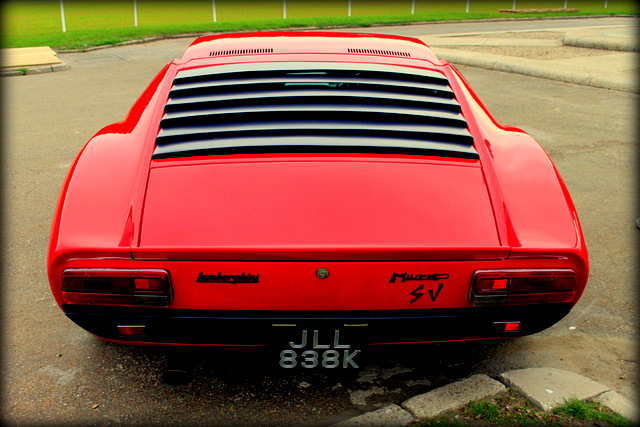Most Beautiful Cars: Lamborghini Miura
Posted on Dec 20, 2020 in Antique | Comments Off on Most Beautiful Cars: Lamborghini Miura
‘Every impatient, rich man wanted one’ – Giampaolo Dallara
No list of the most beautiful cars can be complete without the first to be called a “Supercar,” The Lamborghini Miura.
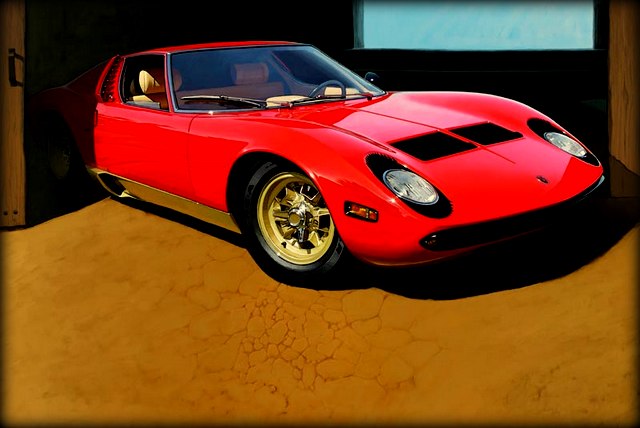
Created at night, in secret and against the orders of the boss; the Miura is exactly what she was envisioned to be, the perfect anti-Ferrari “race car for the road.” Three young employees, GianPaolo Dallara, Paolo Stanzani, and Bob Wallace wanted to show the “old man” that the future of the company was not large grand touring cars, but instead cutting edge sports cars. It was the Miura that truly gave birth to “The House of the Raging Bull.”

Inspired by the Ford GT40, the car was designed around a transversely mounted mid engine layout, which was a departure for Lamborghini. The Bizzarrini designed V12 engine produced 385 horses, and was merged with the transmission and differential. When the rolling chassis was introduced at the 1966 Turin Salon, it caused such a sensation that people actually placed orders despite it having no body.
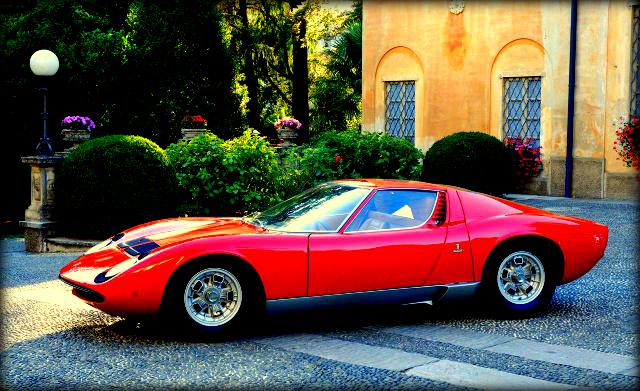
The design for the missing body was given to Bertone, who promptly assigned 25 year old newcomer Marcello Gandini to the project. Gandini had been brought in to replace Giorgetto Giugiaro who was leaving for Ghia. Giugiaro, who was only 19 days older than the young Gandini had actually had prevented him from being hired earlier, and refused to work with the new stylist. Once he was gone, it cleared the road for Gandini and the Miura became his first project.
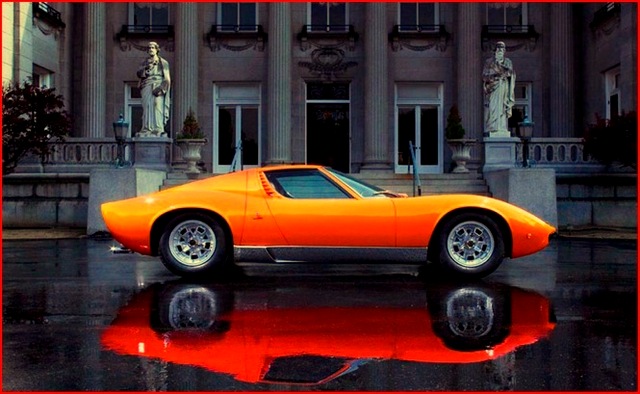
The prototype for the car was called the P400. The actual body design was finished just days before it was debuted at the 1966 Geneva Motor Show. So late, in fact that the engine could not be installed, and the front clamshell had to remain locked throughout the entire show. That lack of planning continued, when it was discovered after the debut that no one had bothered to check if the new V12 could even fit in the new body.

The Miura was essentially a clamshell front and rear aluminum body built around a compact passenger cell. The shape created by Gandini is impossibly beautiful. Low and incredibly wide, a look where every bulge, line and curve is absolute perfection. The effect is stunning, right down to the eyelashes; a design cue that hid small vents for the brakes. In the front, the long expanse of hood is broken by two sets of grillwork that allows air to pass through the radiators. The right grill also served to hide the fuel filler.

The pop up headlamps were rumored to be inspired by the Bertone Corvair Testudo concept car. In the back, a set of six louvers over the engine bay were inspired by the 1963 Corvair Monza GT. These “industry first” louvers were the only thing between the world and that magnificent sounding V12, and would remain a design cue for years to come, gracing cars from Modena to Detroit.

Attention to detail in the design was paramount. When it was decided that car would be named for a fighting bull, the Miura was given horns; small functional side louvers were added to the doors, in an upward sweep. When the doors were opened, the horns were exposed.
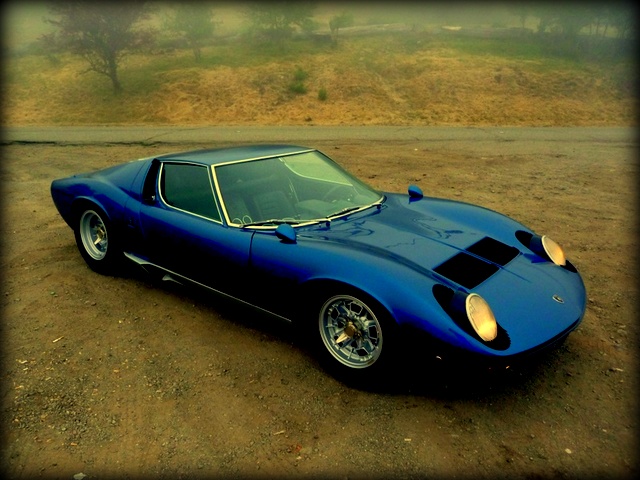
The fighting bull theme is the inspiration and logo for Lamborghini. Named for the Spanish fighting bulls of Don Eduardo Miura of Seville, the car and the company have a strong bullfighting connection. After the birth of the Miura, almost every Lamborghini car name is bull related. The Miura bulls remain the fiercest breed in bullfighting and were the subject of many stories, including Earnest Hemingway’s 1932 book “Death in the Afternoon.”
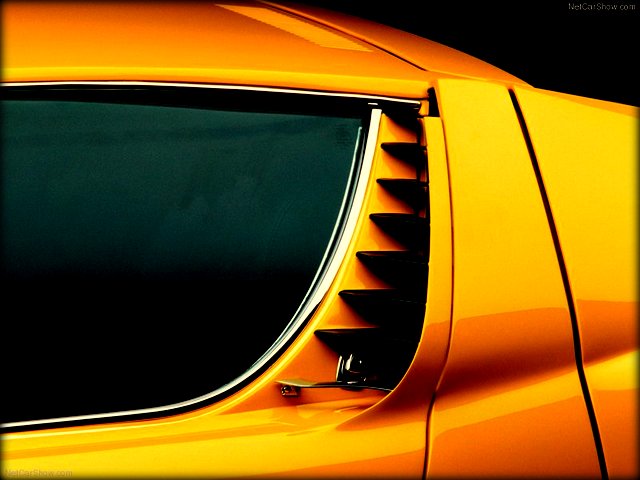
Long before pictures of the Countach graced every boy’s bedroom, this car was the sexiest thing in the decade of free love and bohemian hipness. In its day, it was as radical as a spaceship, and even today a sighting will create an instant crowd.

Owned by the likes of Frank Sinatra, Dean Martin, The Shah of Iran and Elton John, the car was excruciatingly expensive, incredibly rare and nearly impossible to maintain. It is, as one writer said: “Ultimately great at being iconic, but not very good at being a car.” For me, it is beyond “bellissimo.”
